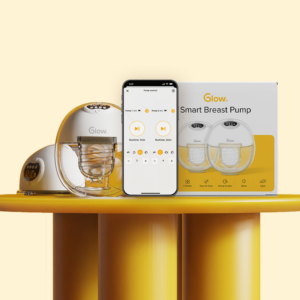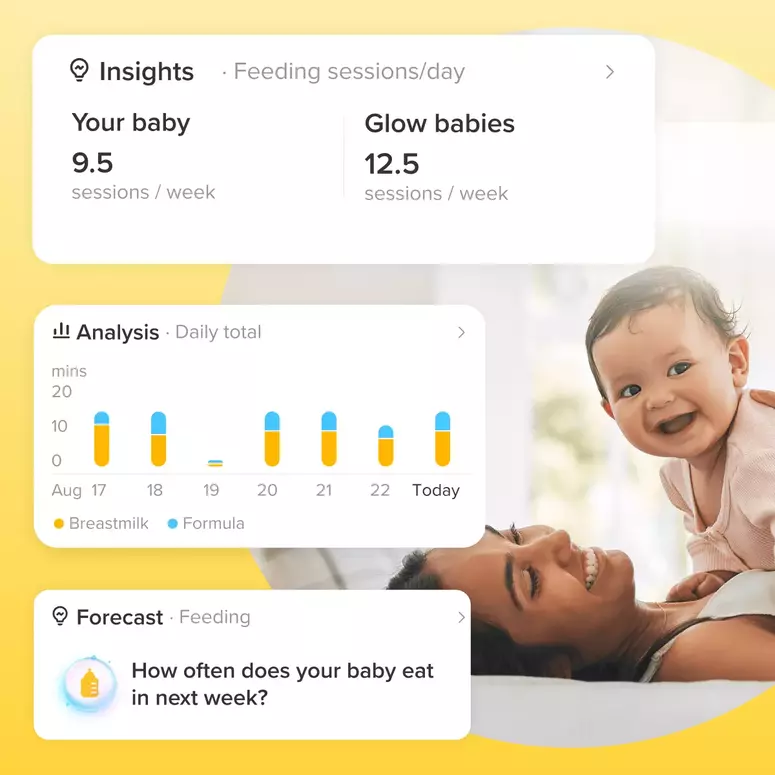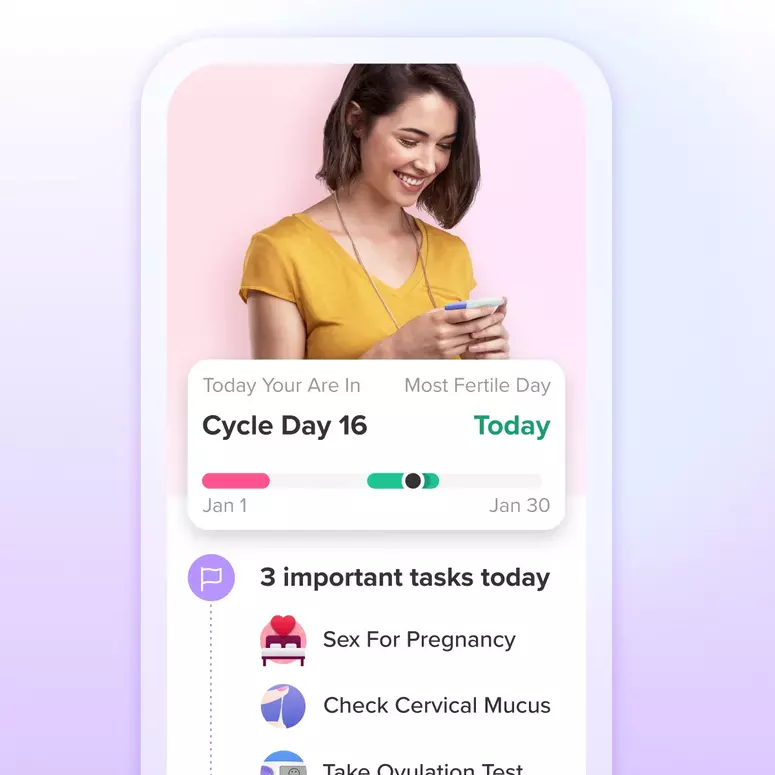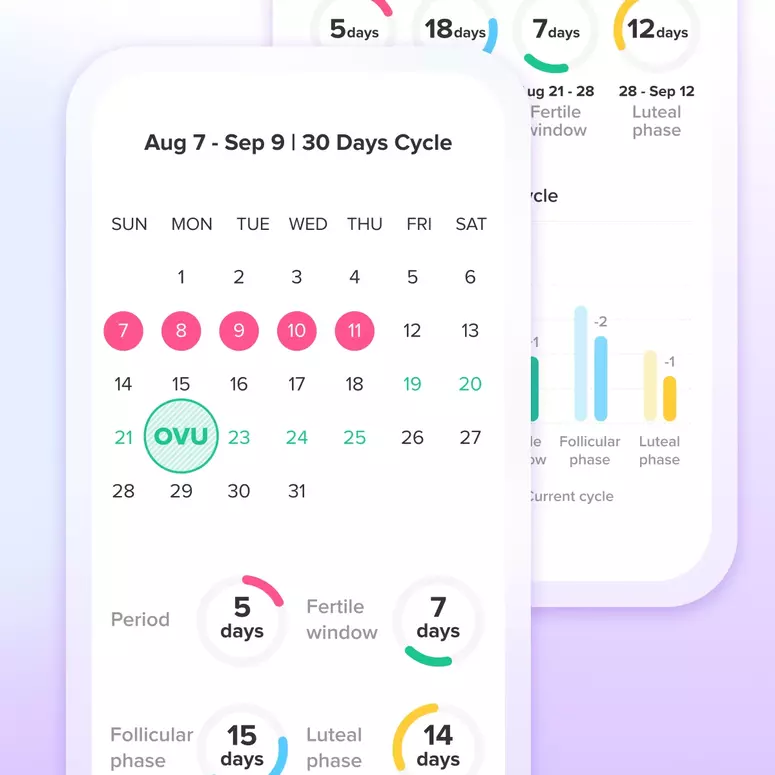
Breastfeeding is a beautiful and natural way to nourish your baby, but it can also be challenging. If you’re having trouble breastfeeding using a breast pump can be a great option. Here’s a guide to help you get started.
TABLE OF CONTENTS
- When to Start Pumping
- How Often Should You Pump?
- Choosing a Breast Pump
- Troubleshooting Common Issues
- Final thoughts
When to Start Pumping
The timing for initiating breast milk pumping is highly individual and often guided by specific circumstances and goals. In the immediate postpartum period, many mothers begin pumping once their milk supply has transitioned from colostrum to mature milk, typically within the first few days after delivery.1 This early pumping can be particularly helpful for stimulating a robust milk supply and addressing common early breastfeeding challenges like engorgement or difficulty with the baby’s latch. For mothers anticipating a return to work or studies, starting to pump a few weeks in advance allows for the gradual building of a freezer stash, easing the transition back to their routines while ensuring their baby continues to receive breast milk.
Beyond these common scenarios, there are other instances where early or proactive pumping may be recommended.1 Mothers of preterm infants or newborns with difficulties latching effectively might be advised to begin pumping shortly after birth to establish a milk supply that can be provided to their baby via alternative feeding methods. Similarly, in situations involving planned separations between mother and baby for medical reasons, initiating pumping early ensures a continuous supply of breast milk is available. Some mothers may also choose to exclusively pump from the outset, and in these cases, establishing a consistent and frequent pumping schedule from the early days is vital for signaling the body to produce and maintain an adequate milk supply.
Furthermore, the need to start or resume pumping can arise later in the breastfeeding journey. If a mother experiences a decrease in milk production, increasing pumping frequency or adding extra pumping sessions can be an effective strategy to boost supply. Additionally, mothers interested in donating breast milk to a milk bank will need to establish a regular pumping routine to collect and store milk according to the specific guidelines of the donation facility. Ultimately, the decision of when to start pumping is a personalized one, often influenced by individual circumstances, breastfeeding objectives, and the guidance of healthcare providers or lactation consultants who can offer tailored advice and support.
How Often Should You Pump?
The frequency of pumping while breastfeeding is a dynamic aspect of your feeding journey, highly dependent on your individual circumstances and desired outcomes.2
For Building a Stash or Occasional Supplementation
If you are primarily breastfeeding directly and wish to create a freezer supply for future use or for occasional supplemental feedings, incorporating one or two dedicated pumping sessions per day can be a practical approach. Many mothers find that pumping after a morning feed, when milk supply tends to be abundant, or between breastfeeding sessions, works well for this goal.
For Mothers Returning to Work
When you are preparing to return to work or studies, it’s generally advised to mimic your baby’s typical feeding schedule by pumping as often as they would nurse.3 This usually translates to pumping every two to three hours while you are away from your baby. This consistent frequency helps to maintain your milk supply and ensures that your baby has an adequate amount of breast milk in your absence.
To Increase Milk Supply
If your goal is to increase your milk production, more frequent and consistent pumping is often recommended. Consider adding extra pumping sessions in between your regular breastfeeding times. Even short, additional pumping sessions (e.g., 10-15 minutes) can signal your body to produce more milk. “Power pumping,” which involves a series of short pumping and resting intervals over about an hour, can also be an effective strategy for boosting supply.
Considering Baby’s Age and Feeding Patterns
The age of your baby and their individual feeding patterns can also influence your pumping schedule. Newborns feed more frequently, so more frequent pumping might be necessary initially. As your baby grows and their feeding intervals lengthen, you may be able to adjust your pumping schedule accordingly.
The Importance of Night Pumping
Prolactin, the primary hormone responsible for milk production, tends to peak during the night.4 Therefore, including at least one pumping session during the night, if feasible, can be particularly effective for increasing and maintaining a robust milk supply, especially in the early months.
Duration of Pumping Sessions
In addition to frequency, the duration of each pumping session is also important. Most mothers find that pumping for 15 to 20 minutes is sufficient to effectively empty the breasts. However, this can vary based on individual milk flow, the type of pump being used, and whether you are single or double pumping. Double pumping, which involves pumping both breasts simultaneously, can often reduce the overall pumping time and may also stimulate greater milk production.
Choosing a Breast Pump
There are three main types of breast pumps: manual, electric, and hospital-grade. Manual pumps are the most affordable and portable, but they require more effort to use. Electric pumps are more convenient and efficient, but they can be more expensive. Hospital-grade pumps are the most powerful and efficient, but they are also the most expensive and typically only available for rent.5
Wearable breast pumps belong to electric pump represent a convenient evolution in pumping technology. These powered devices are designed to be discreetly worn inside your bra, offering the significant advantage of hands-free pumping. While the level of inconspicuousness can vary between different models, the core benefit lies in the ability to pump in public or while on the move without drawing significant attention. This hands-free design is particularly appealing for mothers who need to multitask during pumping sessions, allowing them to engage in other activities without the need to hold pump parts in place. If maximizing your time and maintaining discretion while pumping are priorities, a wearable breast pump could be a valuable option.6
Before you start pumping, it’s important to assemble and clean your pump according to the manufacturer’s instructions. This will help prevent infection and ensure that your pump is working properly. It’s important to find a comfortable position for pumping. You may want to sit in a chair or lie down on your side. Make sure your back is supported and your arms are relaxed. Once you’re in a comfortable position, turn on your pump and adjust the suction to a level that feels comfortable for you. You should feel a gentle pulling sensation, but it shouldn’t be painful. Once you’re done pumping, store your breast milk in a clean container in the refrigerator or freezer. Be sure to label the container with the date and time.
Troubleshooting Common Issues
If you’re having trouble pumping, there are a few things you can try. Make sure you’re using the correct flange size. If your flanges are too small, they may not fit properly and you may not be able to pump as much milk. You can also try massaging your breasts before pumping to help stimulate milk flow.
Think of each pumping session as a dedicated moment to nourish your baby and connect with your body. Let’s explore how to make this time as smooth and productive as possible.
Tips for Increasing Milk Production
If you’re not producing enough milk, there are a few things you can do to increase your milk supply. Pump more often, drink plenty of fluids, and eat a healthy diet. You can also take supplements such as fenugreek or blessed thistle.
Maintaining a Consistent Pumping Routine
stablishing a consistent pumping routine is key for optimal milk production and maintaining a healthy supply. Remember to prioritize relaxation and stay calm, as stress can hinder your body’s ability to produce milk. Using a timer can be a helpful tool to keep track of your pumping sessions. Finally, don’t hesitate to reach out for support if you encounter any difficulties with your pump; your doctor or a lactation consultant can provide valuable assistance.
Final thoughts
Using a breast pump can be a great way to ensure that your baby gets the nutrition they need. By following these tips, you can make the most of your pumping experience.
Article sources:
- Healthline. A Complete Guide to Pumping Breast Milk for Your Baby. Retrieved July 31, 2019
- Health Pulse. How Frequently Can I Pump Breast Milk? Retrieved 22 October, 2024
- What to Expect. Pumping Breast Milk Guide and Tips for Success. Retrieved June 14, 2024
- Kellymum. Importance of Responsive Feeding. Retrieved November 22, 2023
- Cleveland Clinic. Breast Pump. Retrieved September 13, 2023
- Centracare. Wearable Breast Pumps: A Lactation Consultant’s Pros and Cons. Retrieved August 04, 2023





